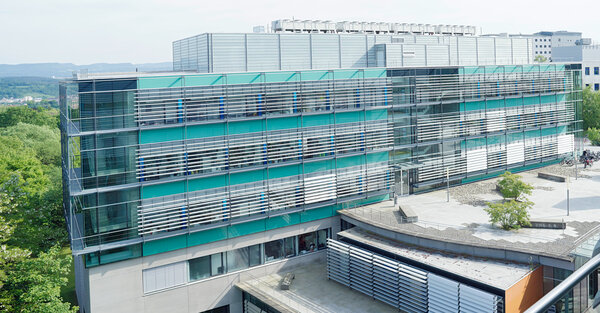A research team led by PD Dr. Justus Marquet and from the Hertie Institute for Clinical Brain Research at the University of Tübingen and the University of Stuttgart has developed two methods that allow muscle activity and training-induced adaptations to be measured completely contactlessly. The studies, published in the Journal of Electromyography and Kinesiology and the Journal of Neural Engineering, demonstrate that magnetic fields generated during muscle activity can be captured using highly sensitive quantum sensors - without the need for electrodes or skin contact.
The researchers used so-called optically pumped magnetometers (OPMs) to record the magnetic fields of active muscles - a method known as magnetomyography (MMG). In the first study, led by Tim Brümmer, participants trained their biceps over a four-week period. The results show that MMG can detect neuromuscular changes due to training just as reliably as the established method of electromyography (EMG) - with the clear advantage of a completely contactless setup.
In the second study, led by Johannes-Dichgans Fellow Lukas Baier, the team succeeded for the first time in measuring muscle fiber conduction velocity (MFCV) using magnetic fields alone. This key physiological parameter reflects how quickly signals travel along muscle fibers - information that plays a central role in both sports science and clinical diagnostics. The study confirmed that conduction velocity increases with muscle force - a well-established phenomenon now demonstrated via contactless measurement.
What makes these findings particularly remarkable is their direct practical applicability. Since the contactless method eliminates the need for skin preparation typically required with conventional electrodes, it becomes highly attractive for repeated testing - such as in athletic training, pediatric monitoring, or rehabilitation settings.
“I’m delighted that our interdisciplinary team has been able to make a visible contribution to transferring quantum technology into real-world medical applications. Our studies show that muscle activity can be measured with high precision - without touching the skin,” says study leader PD Dr. Justus Marquetand. “This opens up new perspectives for clinical diagnostics, training monitoring, and neuroscience research. We’re gaining a clearer picture of where quantum sensors could play a key role in the future of medicine,” adds Prof. Dr. Markus Siegel, head of the Department of Neural Dynamics and Magnetoencephalography, where the studies were conducted.
Together, the studies highlight the potential of combining cutting-edge sensor technology with neuroscience research - and show how fundamental science can translate into practical, everyday applications.
Original publications:
Baier L, Brümmer T, Senay B, Siegel M, Keleş AD, Röhrle O, Klotz T, Noury N, Marquetand J. Contactless measurement of muscle fiber con-duction velocity-a novel approach using optically pumped magnetome-ters. J Neural Eng. 2025 Apr 16;22(2).
https://doi.org/10.1088/1741-2552/adc83b
Brümmer T, Lu H, Yang H, Baier L, Braun C, Siegel M, Marquetand J. Training adaptations in magnetomyography, Journal of Electromyogra-phy and Kinesiology, 2025, 103012, ISSN 1050-6411.
https://doi.org/10.1016/j.jelekin.2025.103012.
Contact:
PD Dr. Justus Marquetand
Hertie-Institut für klinische Hirnforschung
Universität Tübingen
Otfried-Müller-Str. 47
Telefon +49 7071 29-81196
Justus.Marquetand[at]uni-tuebingen.de
Download the Press Release as a PDF (in German)









